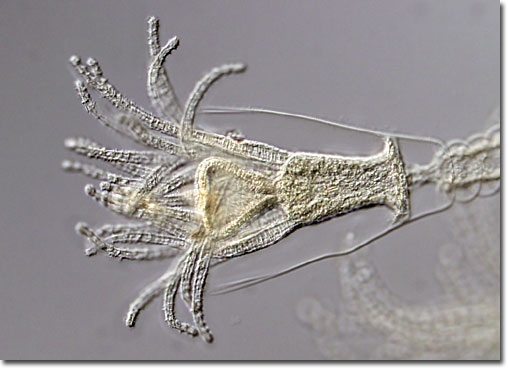|
The polyp members of Obelia are asexual, stalk-like, and usually attached to the ocean floor, rocks, shells, or other surfaces. The polyps generate additional polyps by budding, creating a branching colony of the organisms that has a structure similar to that of a tree. A transparent sheath known as the perisarc encases the colony. Dimorphic, some of the polyps are responsible for feeding, while others concentrate their energy on reproduction. The feeding polyps feature tentacles and share the nutrients they imbibe with the rest of the colony after digestion in the gastrovascular cavity. Reproductive polyps, however, lack tentacles and are club-shaped.
|
